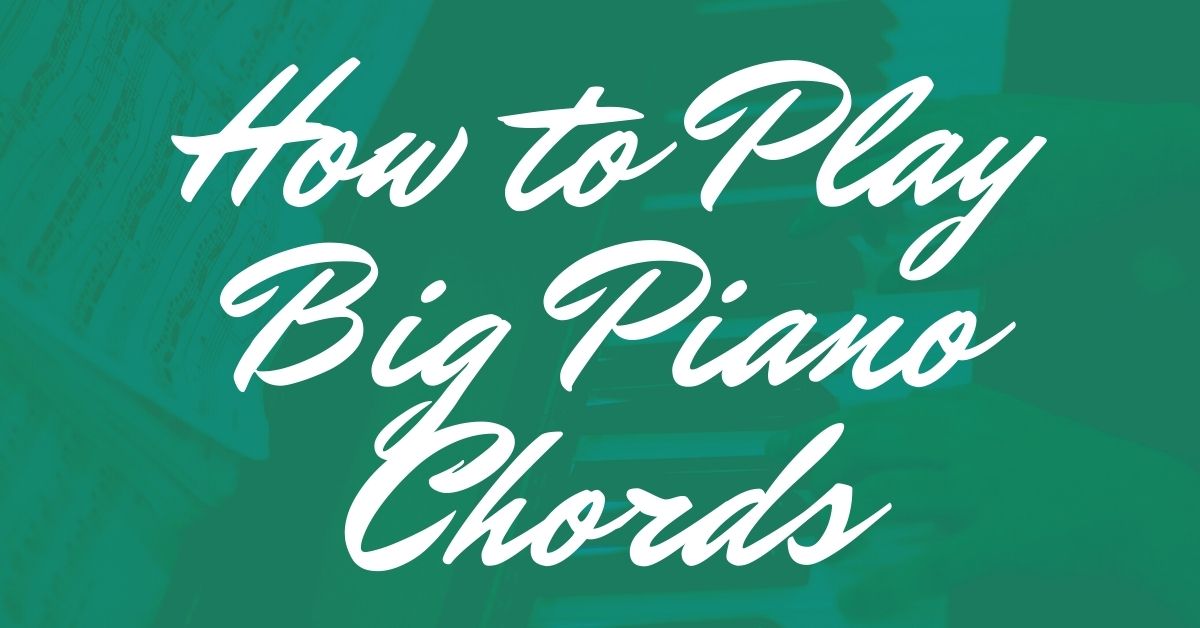How to Play Electrifying Big Piano Chords

Have you ever listened to the climax of a great bluesy piano solo, when the pianist is playing big piano chords with two hands, and wondered:
"How are they getting that sound?"
"What are they playing?"
In this article we're going to show you how you can build big piano chords with two hands.
But more important than just showing you how to build these chords, we're also going to show you how to practice playing these big piano chords in a blues form.
Understanding this information is going to help you use these big piano chords in your own solos and comping.
Play Big Piano Chords Step 1: The Right Hand - Solo Line
Using the 12-bar blues form we'll first create a right hand solo phrase. This can be your own improvised solo idea. In our example below, we'll use a 2-bar example in the key of F.
As you can see, the solo idea that we came up with is based entirely on an F minor pentatonic scale.
Next, we're going to simply double the melody in octaves. This means that you'll be playing the entire solo idea above in octaves (most likely using your thumb for the bottom note and your 5th finger for the top note).
Practice the example above so that you can play it in time with your metronome with a solid sense of time and swing before going on to Step 2.
Play Big Piano Chords Step 2: The Left Hand - Chords and Rhythm
Part of the secret of achieving two-handed, big piano chords and using them in a solo context is that the left hand really isn't doing anything very complex. The left hand is playing a single chord over and over again as the harmony changes, and doubling the rhythm of the right hand.
In other words, the left hand part is based on playing an F7 chord in measure 1 and a Bb7 chord in measure 2 and repeating each chord by doubling the same rhythm as the right hand melody.
One quick note about the left hand chords - the example above uses rootless chords. Check out our Academy Blueprint: how to create rootless piano chords for more detailed information on this topic.
One other quick note - notice that the final left hand chord (bass clef, measure 2) is not a Bb7 chord but rather an F7 chord, even though it is in a Bb7 measure. This is because of a little musical device known as anticipation.
Anticipation means that although the F7 chord does not actually occur until measure 3, we play an F7 chord on the last 8th-note pulse of measure 2 because the resolution to that chord is felt slightly early.
Play Big Piano Chords Step 3: Listen
There are countless examples of this type of playing in jazz and blues, but two pianists who employed this technique regularly that come to mind quickly are Wynton Kelly and Red Garland. Check out Wynton Kelly on "Freddie Freeloader" at the 1:48-1:55 mark. Check out Red Garland using this technique on the melody of "Bye Bye Blackbird" at the 1:35-1:45 mark.


